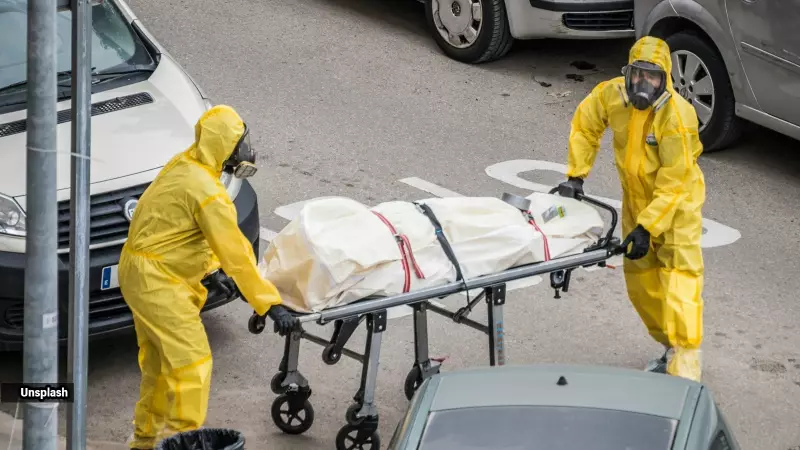
Witnessing unusual signs from a deceased loved one's body can turn an already painful experience into something truly haunting. A recent Quora post highlighted this disturbing reality when a user shared: "When my father died he started to bleed from his mouth and nose. He was dead yet his body kept pouring out liters of blood. There was no injury inside or outside his body. What could be the cause of this?"
While such scenes can be deeply unsettling for grieving families, medical experts confirm this phenomenon isn't as uncommon as people might think. Dr Basavaraj S Kumbar, Consultant, Internal Medicine at Aster Whitefield Hospital in Chennai, states clearly: "Bleeding from the mouth and the nose after death is very common."
Why Does Bleeding Occur After Death?
According to Dr Kumbar, this typically happens when blood vessels dilate after death. Depending on where this dilation occurs, blood leakage can result. Dr Jagadish Hiremath, a public health expert, provides additional insight, explaining that internal pressure changes within the chest and abdomen drive this phenomenon.
"After death, as the body begins to relax and decompose, fluids, including blood from the lungs, stomach, or airways, can be expelled through the mouth or nostrils," Dr Hiremath explains. As the body's muscles relax and gases form during decomposition, these internal pressure changes force blood and other fluids to seek exit points.
When Does the Risk of Post-Mortem Bleeding Increase?
Medical experts reveal that certain conditions significantly increase the likelihood of noticeable bleeding after death. Dr Kumbar notes that the risk is higher when medical complications like tuberculosis are present, or if the patient experienced trauma, received CPR, or underwent medical procedures before passing away.
"This accumulated blood tries to leak through any opening like the nose, mouth or even the anal canal," Dr Kumbar explains. Dr Hiremath adds that patients with lung congestion, heart conditions, internal bleeding, or those who suffered sudden cardiac arrest face increased risk. "The pooling of blood in the lungs or airways may flow outward once circulation ceases and body pressure equalises."
Medications also play a crucial role. Dr Kumbar explains that patients on blood thinners—such as those who underwent organ transplantation or valve replacements—experience an "anti-coagulation process" after death that leads to the formation of blood pools that can leak out.
How Much Blood is Considered Normal?
The volume of blood observed after death varies significantly based on individual circumstances. Dr Kumbar confirms that the amount depends on underlying medical conditions, trauma, or preceding procedures.
Dr Hiremath concurs, noting that certain medical conditions can make post-mortem bleeding appear more pronounced. "For example, liver disease, severe infections, blood disorders like leukaemia, or conditions that impair clotting, such as disseminated intravascular coagulation (DIC), can cause extensive internal bleeding that continues to drain externally after death," he explains.
In such cases, even small internal ruptures or natural openings can release significant blood volumes because the body's clotting mechanism fails to seal them effectively before death. Though this profuse bleeding might suggest injury or even signs of life, doctors emphasize it's a common occurrence dependent on underlying medical conditions, procedures, and medications.
As Dr Hiremath summarizes: "These changes are not signs of life but normal biochemical and physical effects of the body's transition after death." Understanding this scientific reality can provide some comfort to families confronting this unsettling experience during their time of grief.





